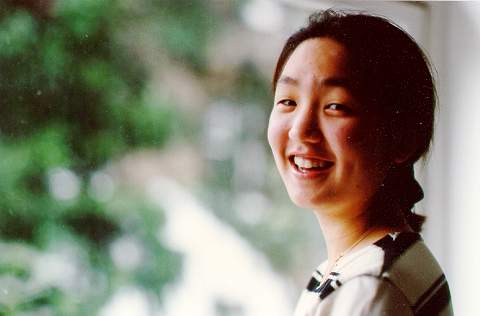|
A PERCEPTIVE PIANIST

BILL NEWMAN listens to Yoo Na Noh
The Keyboard Charitable Trust for Young Professional Performers is in
the process of being shunted around the premises of Steinway Hall, 44, Marylebone
Lane, London, Wl whilst necessary renovation is underway.
Thankfully, this does not effect standards of performance, despite honking
taxi cabs, police sirens and articulated lorries depositing their wares
and loading up for further consignments. I am really staggered by the high
concentrative levels possessed by young performers. Music continues to enter
their systems through sensitive brain cells operating body movements, finger
pressure, articulation and so on, whatever the contingencies!

Yoo Na Noh is tiny, pert, totally confident with her abilities to come
to grips with music of all kinds whatever the technical difficulties, interpretive
insight, choice of tempi.
Clementi, I remember from my late school days with the occasional rap
over the knuckles from an irate teacher when the notation became blurred.
The Piano Sonata Op 25 No 5 with its specific if flowery markings -- Piuttosto
allegro con espressione, Lento e patetico, Presto -- contains
a fair number of performer traps for the unwary, but Noh, at 21 years, already
has that knowledge of style, expressive touch and continuity of line evenly
matched within a controlled temperament. It soon became obvious that more
pleasant surprises were in store.
I have never understood the Horowitz approach to Chopin's Andante
Spianato and Grande Polonaise Op 22 -- so ridiculously fast it defies
analysis, even though the fingers work their own brand of magic. Rubinstein
is preferable, although his sheer masculinity sometimes tires the ear later
on. Noh performs the piece at a persuasively moderate tempo. Where the rippling
arpeggios suggest gossamer threads in the first episode, the grandness of
the Polonaise is not just a tonal display of keyboard splendour; it requires
that subtle emphasis on leading notes of the phrase followed by the slightest
of vibratos before presenting each strand of material that makes up the
whole. Follow the pattern through to the coda and you discover that the
closing pages should be built up architecturally, not, as many pianists
prefer, to engage in flurries of frenetic excitement. This particular performance
was admirable in every respect.
The Russian Sofia Gubaidulina is probably the rightful person to succeed
the late Alfred Schnittke as her country's leading composer. Musical
Toys certainly doesn't demand the kind of cerebral contemplation from
a listening standpoint compared with other works. The episodes suggest delightful
childhood visions: Mechanical Accordion, Magic Roundabout,
The Trumpeter in the Forest, The Magic Smith, April Day,
Song of the Fisherman, The Little Tit, A Bear playing the
Double Bass and The Black Woman, The Woodpecker, The
Elk Clearing, Sleigh with Little Bells, The Echo, The
Drummer, Forest Musicians. A far cry from Edvard Grieg's legato
lines and spritely repetition, each offers individual slants of exacting
likeness for their subject matter with a feeling of true progression as
one ventures forth on a journey of happiness and remembrance.
Poulenc's Thème Varié belongs to his most important
keyboard output, a tour de force of exploratory passage work, vivid
and loving contrasts with many changes of key and metre. A splendid conclusion
to a fine recital, then, except for two encores -- one a pictorial piece
by Englishman Frank Bridge which has become a firm favourite with our young,
gifted artist.
Favourite teacher Noretta Conci, looked on and listened with radiant
expression.
Copyright © 3 May 2002
Bill Newman, Edgware, UK
 << Music
& Vision home
Lysistrata >>
<< Music
& Vision home
Lysistrata >>
|

